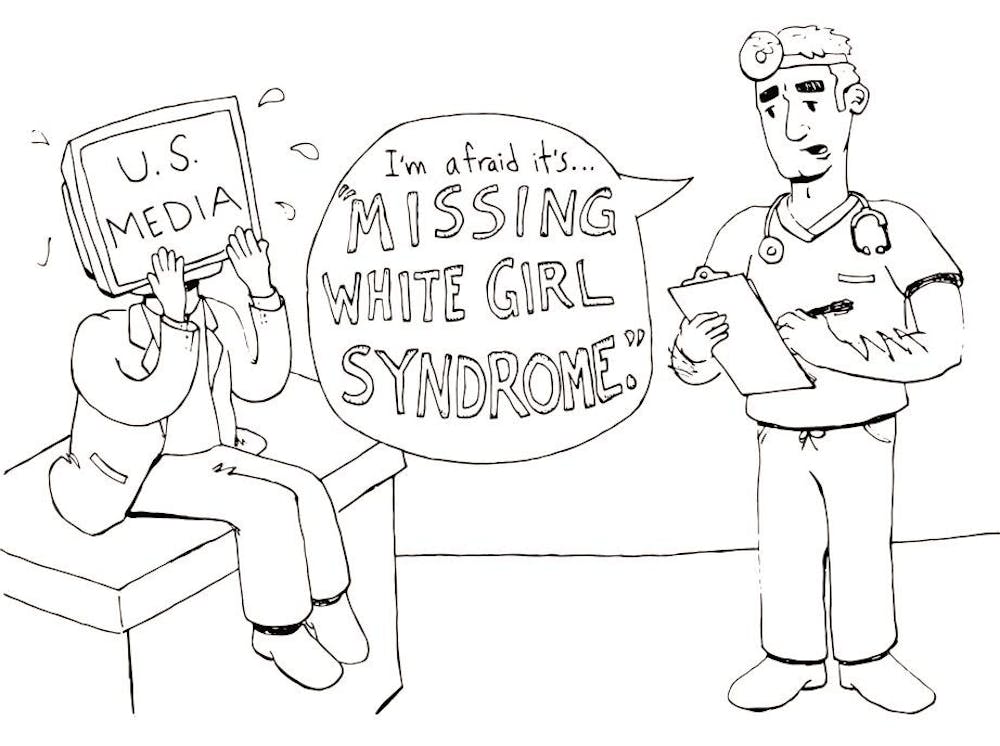It’s been a tough few weeks for the people of IU.
The deaths of two IU students, Yaolin Wang and Joseph Smedley, led to a candlelit vigil in Dunn Meadow on Oct. 7, where memories of the students were shared.
Local news outlets ran numerous stories on each of the students. The University’s official Twitter page constantly shared links, updates and information about Wang and Smedley.
But according to one article, these efforts to inform the IU community weren’t enough.
An article recently published on the theodysseyonline.com argued that a phenomenon in media known as “Missing White Girl Syndrome” was responsible for a lack of media coverage surrounding Smedley’s disappearance in particular.
Though the Editorial Board does not dispute the existence of Missing White Girl Syndrome, it argues that plenty of media coverage existed around Smedley’s disappearance and that the syndrome was not explicitly present in this case.
A Google News search of Smedley, for example, brings up almost 7,500 results.
Several local and statewide news outlets, from the Bloomington Herald-Times to the Indianapolis Star, covered Smedley’s disappearance and death. Yet, the Odyssey article fails to mention this extensive coverage from local and statewide news media.
Unless the author of the Odyssey article went through every single one of those results and investigated whether they had an effect on the students of IU or not, then the argument that there was not enough media coverage of Smedley does not hold merit.
The article’s claim that Missing White Girl Syndrome was in effect is also flawed because the author of the article doesn’t explain if the syndrome affected Smedley’s news coverage.
Instead, the article claims the syndrome had more of an effect on campus among students.
Missing White Girl Syndrome is predominantly a trend that exists in news media coverage of missing white people versus missing people of color.
Researchers Seong-Jae Min and John Feaster said the cases of missing black children are significantly under reported by news media.
This revealed a disparity in the amount of media coverage for these children versus how many black children actually went missing.
Min and Feaster found that a race bias definitely existed in the media coverage. Even though racial minorities in general made up 47 percent of missing child cases from the time period, most news coverage was about missing white children, specifically white girls.
As the trend is one that is primarily occupied with race in regards to treatment of missing individuals specifically in news media, it seems superfluous to try and compare a supposed bias in news reporting with a lack of awareness among IU students in particular toward Smedley.
The Editorial Board urges anyone to participate in careful research and measured analysis before making claims that might not be about issues that are taking place.




